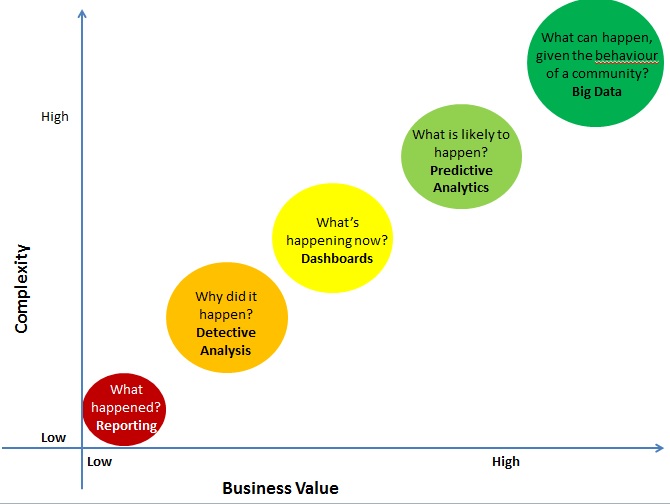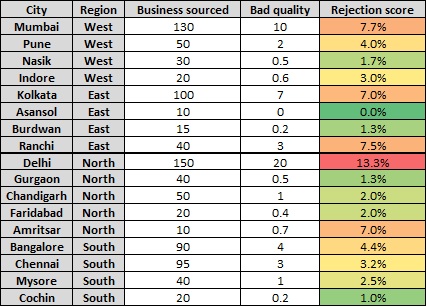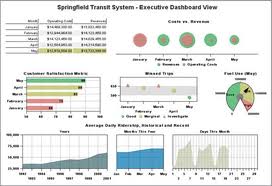Business Analytics has become a catch all word for any thing to do with data.
So if you are new to this field and don’t understand what people refer to as “Business Analytics”, don’t worry!
Even after spending more than 6 years in this industry, there are times when it is difficult for me to understand the work a person has done by reading his CV.
Here is how an excerpt from a typical JD might look like:
- Analyze, prepare reports and present to Leadership team on a defined frequency
or
- Lead multiple analytical projects and business planning to assist Leadership team deliver business performance.
On one hand, this creates confusion in mind of person applying for a particular role. On the other hand, it leaves the selectors with a difficult role to understand and judge what a person has done in past.
Now, if I got this as description for one of the jobs I had applied to, I would be scared! Scared, not because I don’t know the subject, but because, these could mean anything. The work could refer to preparing basic reports at a junior level to performing multi-variate deep dives on various subjects.
So, what do you do when you are in such a situation?
Well, the first thing you should do is understand Business Analytics spectrum. Once you have understood it, ask which part of the spectrum, the role applies to and then decide whether it suits your skills or not.
Following is a good representation of this spectrum:
Let me explain each of these areas in a bit more detail.
[stextbox id=”section”]Reporting – Answer to What happened?[/stextbox]
The domain of Analytics starts from answering a simple question – What happened? This activity is typically known as reporting. These are typically the MIS which people want to receive first thing in the morning. It is a snapshot of what has happened. Following is an example of how a typical report might look like:
Tools used in reporting:
Majority of elementary reporting happens on MS Excel across the globe. More evolved Organizations might pull the data through databases using tools like SQL, MS Access or Oracle. But typically, the dissemination of reports happens through Excel.
Skills required for reporting:
- MS excel
- Business understanding
- Ability to perform monotonous task with diligence
[stextbox id=”section”]Detective Analysis – Answer to Why did it happen?[/stextbox]
Detective Analysis starts where reporting ends. You start looking for reasons for unexpected changes. Typical problems you work on are “Why did the Sales drop in last 2 months?” or “Why did the latest campaign under-perform or over-perform?”. In order to find out answers to these questions, you look at past trends or you look at distribution changes to find out the reasons for the changes. However, all of this is backward looking.
Some of these insights, which you find out after looking at backward analysis can be used for business planning, but the purpose of analysis is typically to find out what has worked and what has not.
Tools used in detective analysis:
Typically used tools are MS excel, MS Access, Minitab, R (basic regression). You tend to use advanced Excel and Pivot tables while dealing with these problems and typically creating time series graphs helps a lot.
Skills required for detective analysis:
- Structured thinking
- MS Access, Excel, basic regression
- Business understanding
[stextbox id=”section”]Dashboards – Answer to What’s happening now?[/stextbox]
Dashboard is an Organized and well presented summary of key business metrics. They are usually interactive so that the user can find out the exact information he is looking for. Dashboard, in ideal state should provide real time information about performance. Following is an example of how a dashboard might look like:
The whole science of creating data model, dashboards and reports based on this data is also known as “Business Intelligence“.
Tools used for creating dashboards:
For limited size of data, dashboards can be made using Advanced excel. But, typically Organizations use more advanced tools for creation and dissemination of tools. Business Objects, Qlikview, Hyperion are names of some such softwares.
Skills required for creating dashboards:
- Strong structured thinking: The person will need to create the entire architecture and data model
- Business Understanding: If you don’t understand what you want to represent, God help you!
[stextbox id=”section”]Predictive Modeling – Answer to What is likely to happen?[/stextbox]
This is where you take all your historical trends and information and apply it to predict the future. You try and predict customer behaviour based on past information. Please note that there is a fine difference in forecasting and predictive modeling. Forecasting is typically done at aggregate level, where as predictive modeling is typically done at a customer / instance level
Tools used for Predictive modeling:
SAS has the highest market share among tools used for predictive modeling followed by SPSS, R, Matlab.
Skills required for Predictive modeling:
- Strong structured thinking
- Business Understanding
- Problem Solving
[stextbox id=”section”]Big data – Answer to What can happen, given the behaviour of the community?[/stextbox]
Imagine applying predictive modeling with a microscope in hand. What if you can store, analyze and make sense out of every information about the customer. What kind of social media community he is attached to? What kind of searches is he performing? Big data problems arise when data has grown on all three Vs (Volume, Velocity and Variety). You need data scientists to mine this data.
Tools used in Big data:
This is a very dynamic domain right now. A tool which used to be market leader 6 months back is no longer the best. Hence, it is difficult to pin down specific tools. These tools typically work on Hadoop to store the data.
Skills required for harnessing big data:
- Strong structured thinking
- Advanced Data Architecture knowledge
- Ability to work with unstructured data
So, now that you understand the Analytics spectrum, if you come across a role which is not clear to you, please spend the necessary time understanding which domain does it refer to and does it fit right with what you want to achieve.
If you have come across this confusion on understanding “Business Analytics“, this article should have helped you. In case there are any further confusion, do let me know.







